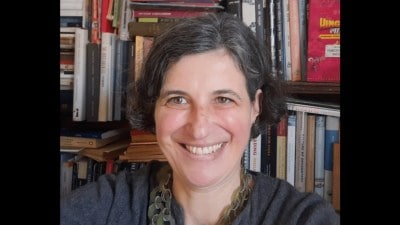In the Rigveda, some facts about sati
In August and September this year, one case of committing sati and two failed attempts in Madhya Pradesh were reported in the media. Reports...

In August and September this year, one case of committing sati and two failed attempts in Madhya Pradesh were reported in the media. Reports also appeared that the Hon’ble Rajasthan High Court allowed prayers within premises of Rani Sati Mandir of Jhunjhunu district, but prohibited organising fairs, distribution of pamphlets and performing chunri ceremony at the temple till final orders.
Some people assert that Rigveda vide richa X.18.7 (seventh richa of 18th Sukta of tenth chapter) commands a Hindu widow to mount the pyre of her deceased husband. In fact the word vidhawa (widow) does not independently occur in this richa at all, so, how can this richa be related to widows?
The word vidhawa does appear in many other richas of Rigveda. One website quotes Kane’s translation of this richa as: ‘‘Let these women, whose husbands are worthy and living enter the house with ghee applied as corrylium (to their eyes). Let these wives first step into the pyre, tearless without any affliction and well adorned.’’
Even this English translation does not categorically state that let these widows first step into the pyre. This translation simply says ‘‘let these wives first step into pyre.’’ As per common sense, from the moment of death of her husband, a woman is no more called ‘‘a wife’’ but a widow (vidhawa). So phrase ‘‘these wives’’ in above translation of Kane cannot be interpreted to refer to ‘‘widows’’.
In fact, Sukta 18 commands a Hindu widow to return to world of living beings, to return to her house to live with her children and grand children and the Rigveda confers on her all the properties of her deceased husband. One should go through all the 14 richas of this 18th Sukta (revealed to Rishi Sunkusuk Yamayan) so as to understand the true and correct meaning of X.187. The third richa (X.18.3) commands: ‘‘May those who are living remain separate from dead…’’ (Rigveda Samhita by HH Wilson & Bhashya of Sayana edited by Ravi Prakash Arya and K.K. Joshi). Dr Wendy D O’Flaherty, in her book Rigveda (Page 52) translates: ‘‘Those who are alive have now parted from those who are dead….’’
Shri Ram Sharma Acharya of Barreilly in his Rigveda (in Hindi) translates: ‘‘mritak ke pass se jeevit manushya laut aavey’’… Dr Ganga Sahay Sharma in his Rigveda (Delhi Pocket Books) translates: ye jite huve log marey huve vyaktiyo ke pass se laut aavey’’… This command of Rigveda to leave behind the dead; to remain separate from dead is equally applicable to Hindu widows also as they are also living/jeevit persons.
The English translation of the seventh richa (X.18.7) as given by HH Wilson etc is ‘‘Let these women who are not widows, who have good husbands, enter (anointed) with unguent and butter. Let women without tears, without sorrow, and decorated with jewels, first proceed to the house.’’ Dr O’Flaherty translates this seventh richa: ‘‘These women who are not widows, who have good husbands—let them take their places using butter to anoint their eyes. Without tears, without sickness, well dressed let them first climb into the marriage bed.’’ Acharya translates: ‘‘yeh sunder patiwaali sadhawa naariya ghrit yukta kaajal lagaati hui apne grih ko prapta ho. Yeh naariya aasuuon ko tyag kar manoovikaaroo ko duur karati hui sundar aishwarya waali ho kar sabase aage chalati hui apne gharo ko prapt ho.’’
Thus, different authors vouch that richa X.8.7 does not refer to widows at all. What this richa says in a nutshell is that married women should be first (among others) to return to their homes. Readers can see that this richa does not say that first these women step into pyres.
The eighth richa (X.18.8) especially and expressly commands a Hindu widow to return alive to her home. Wilson translate: ‘‘Rise, woman, (and go) to the world of living beings; come, this man near whom you sleep is lifeless; you have enjoyed this state of being the wife of your husband, the suitor who took you by the hand.’’ Pandit Acharya translates: ‘‘Hey mritak ki patni! Tumhara yeh pati mrityu ko prapta ho chuka hai—ab tum iske pass vyartha baidhi ho. Apne putradi aur ghar ka vichar karti hui uutho. Tum ish pati ke sath garbh dharan aadi stree kartavya ko pura kar chuki ho aur tum uske pran ke chale jaane ki baat bhi jaanati ho attah ghar ko lauto.’’
According to Achraya Sayana, it is the first six richas of 16th Sukta of Xth chapter of Rigveda (X.16.1 to 6) which are to be recited at funeral pyres; and, none of these six richas either call for burning of widows or make any reference to widows. Richa X.40.8 of the Rigveda, in fact, praises Ashwin gods for protecting a widow. How could the gods protect widows if Rigveda commanded the burning of widows?
Another richa X.40.2, may come as a complete surprise to many Hindus. Wilson translates it: ‘‘Where are you, Ashwins, by night? Where are you by day? Where do you sojourn? Where do you dwell? Who brings you into his presence in the same place (of sacrifice) as on her couch a widow (brings) her husband’s brother, as a woman (brings) her husband (to her). Thus, Rigveda not only sanctioned survival of a widow but also her living with her devar with full dignity and honour in the family. It expressly sanctioned widow-marriage.
The Veda, Ramayan and Gita are the three and the only three supreme scriptures of Hindus. All others (like Brahmanas, Upnishads, Purana, Dharma Shastras, Sutras) are commentaries, explanatory notes or stories written by individuals. As commentaries written on the Constitution cannot override its Articles and as laws passed by the Parliament or State Assemblies cannot supersede the Articles, similarly, commentaries/explanations on Vedas by individuals cannot supersede richas of Vedas or Ramayan or Bhagwat Gita.
If greedy family members incite a widow to commit suicide on pyre of her husband, let us not say or believe that widow burning is sanctified by Rigveda or by Hinduism.





- 01
- 02
- 03
- 04
- 05


























